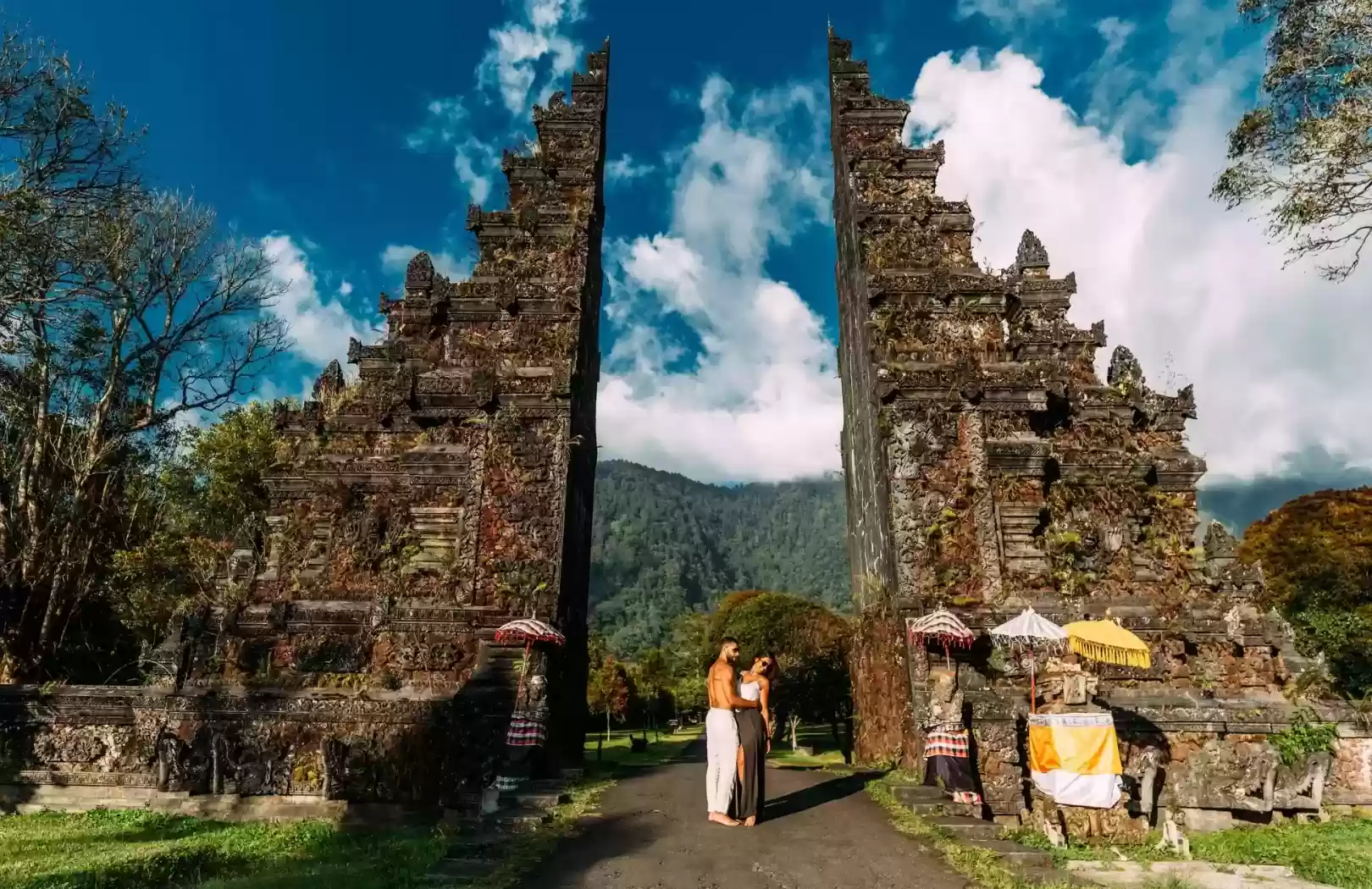The Ultimate Guide to Bali’s Cultural Heritage - Must-See Temples and Sacred Sites

Bali, often referred to as the "Island of the Gods," is renowned for its rich cultural heritage, blending ancient traditions, spiritual practices, and breathtaking natural beauty. For centuries, Balinese culture has been deeply intertwined with Hinduism, and the island boasts a wealth of sacred temples and spiritual sites that offer insights into the island's religious traditions. Whether you're a history buff, an architecture enthusiast, or simply someone seeking to connect with Bali's spiritual energy, the island’s temples are a must-visit. In this ultimate guide, we’ll explore the top temples and sacred sites in Bali that should be on your cultural itinerary.
1. Uluwatu Temple: A Cliffside Marvel
Located on the southwestern tip of Bali, Uluwatu Temple (Pura Luhur Uluwatu) is one of the island’s most iconic and revered temples. Perched 70 meters above the Indian Ocean, this stunning sea temple offers breathtaking panoramic views and a sense of tranquility that’s hard to match.
Uluwatu Temple is not only famous for its dramatic setting but also for its significance in Balinese Hinduism. It’s dedicated to the spirits of the sea and plays an important role in Bali’s cultural and religious practices. The temple is known for its majestic architecture, with intricately carved stone gates, shrines, and statues.
Things to Do at Uluwatu Temple:
-
Watch the Kecak Dance: The Kecak Dance is a traditional Balinese dance that takes place at sunset, performed on the temple's open-air stage. The story is derived from the Ramayana, with men chanting in rhythmic patterns to tell the tale of Hanuman’s journey.
-
Explore the Temple Grounds: Take a walk around the temple complex and enjoy the scenic views. Be sure to keep an eye out for the mischievous monkeys that inhabit the area.
2. Tanah Lot Temple: Bali’s Iconic Sea Temple
Another one of Bali's most famous temples, Tanah Lot Temple is located on a rocky outcrop in the sea, about 20 kilometers from Denpasar. It is one of Bali’s seven sea temples and is dedicated to the sea god Baruna. Tanah Lot is famous for its unique location, perched atop a rock formation and surrounded by the ocean, making it one of the most photographed temples in Bali.
This temple holds great significance in Balinese Hinduism as it is believed to protect the island’s spiritual balance. The best time to visit Tanah Lot is during high tide or sunset, when the temple appears to be floating on the water, creating a stunning visual spectacle.
Things to Do at Tanah Lot Temple:
-
Sunset Views: Witnessing the sunset over Tanah Lot is an unforgettable experience. The temple becomes even more magical as the sun dips below the horizon.
-
Visit the Holy Spring: There’s a holy spring at the base of Tanah Lot where you can perform a purification ritual, a practice that many Balinese Hindus engage in.
3. Besakih Temple: Bali’s Mother Temple
Considered Bali's most important and largest temple complex, Besakih Temple (Pura Besakih) is located on the slopes of Mount Agung, Bali’s highest volcano. Revered as Bali's Mother Temple, Besakih holds immense spiritual and cultural significance and is a sacred place of worship for the Balinese people.
This temple complex consists of over 20 individual temples spread across the mountainside, each serving a specific function in Balinese Hindu worship. The temple is surrounded by stunning natural beauty, with views of the surrounding rice fields and the majestic Mount Agung.
Things to Do at Besakih Temple:
-
Climb Mount Agung: For the adventurous, a trek to the summit of Mount Agung can be a spiritual pilgrimage. The mountain is believed to be a sacred place, and the journey to the top is a physical and spiritual challenge.
-
Explore the Temple Complex: Take your time to explore the many temples at Besakih. Each temple offers a unique view of Balinese architecture, art, and religious practices.
4. Tirta Empul Temple: Bali’s Sacred Water Temple
Tirta Empul Temple, located in the village of Manukaya in central Bali, is one of the island’s most revered temples. This holy spring temple is dedicated to Vishnu, the Hindu god of water, and is renowned for its sacred spring water that is believed to have purifying properties. The temple is a significant site for both locals and visitors who wish to take part in a ritual purification ceremony.
Visitors can immerse themselves in the temple’s sacred pools and participate in a purification ritual, where the waters are believed to cleanse the body, mind, and soul. Tirta Empul’s serene surroundings, lush jungle, and tranquil ambiance make it an ideal place for spiritual reflection.
Things to Do at Tirta Empul Temple:
-
Purification Ritual: Visitors can participate in the purification ceremony by submerging themselves in the temple's holy spring water, following the steps of the Balinese Hindus.
-
Explore the Temple Grounds: Take a walk through the temple complex and admire the beautifully crafted statues, pools, and stone carvings that tell stories from Hindu mythology.
5. Goa Gajah (Elephant Cave Temple): A Sacred Cave Sanctuary
Located near Ubud, Goa Gajah (Elephant Cave Temple) is an ancient temple complex that dates back to the 11th century. The temple is carved into a rock face, with a large cave entrance shaped like a fearsome mouth. Goa Gajah is an important historical and spiritual site and is believed to have been used as a sanctuary by Buddhist monks during the Majapahit Empire.
The temple is filled with intricate stone carvings, including depictions of deities, elephants, and other animals. Goa Gajah is a peaceful and serene place where visitors can connect with Bali’s ancient past while admiring the temple’s unique features.
Things to Do at Goa Gajah:
-
Explore the Cave: Step inside the cave and admire the carvings that adorn its walls. The cave has a quiet, contemplative atmosphere, perfect for reflection.
-
Visit the Holy Springs: Just outside the cave, there are holy springs where visitors can partake in the purification rituals that are still practiced by locals.
6. Pura Luhur Batukaru: A Hidden Gem in Bali’s Highlands
Located in the peaceful highlands of Bali, Pura Luhur Batukaru is a serene temple surrounded by lush rainforest and rice terraces. Situated at the foot of Mount Batukaru, Bali’s second-highest volcano, the temple is dedicated to the Balinese Hindu god of the mountains. It is considered one of the six major temples in Bali and is an important place of worship for locals.
Unlike some of Bali’s more crowded temples, Pura Luhur Batukaru remains relatively quiet and is perfect for those seeking a peaceful, spiritual experience away from the hustle and bustle. The temple is surrounded by breathtaking natural beauty, with scenic views of the surrounding landscapes.
Things to Do at Pura Luhur Batukaru:
-
Experience the Serenity: Spend time meditating or reflecting in the tranquil surroundings of the temple. The serene atmosphere and beautiful setting make it a perfect place for inner peace.
-
Explore the Grounds: Take a leisurely walk around the temple grounds and appreciate the traditional Balinese architecture and art.
7. Pura Ulun Danu Bratan: Bali’s Floating Temple
Ulun Danu Bratan Temple is located on the shores of Lake Bratan in the Bedugul region of Bali. This iconic water temple is dedicated to Dewi Danu, the goddess of water, and is one of Bali’s most recognizable temples. The temple appears to “float” on the lake, creating a stunning visual effect, especially during sunrise and sunset.
Ulun Danu Bratan Temple plays an important role in Bali’s agricultural practices, as it is closely associated with the water supply for the island’s rice terraces. The surrounding area is a serene and beautiful escape, with misty mountain views and cool temperatures.
Things to Do at Ulun Danu Bratan Temple:
-
Admire the Views: Take in the breathtaking views of the lake, temple, and surrounding mountains. The peaceful setting makes it an ideal location for photography.
-
Explore the Grounds: Walk around the temple complex and learn more about its significance in Balinese culture and water management.
Conclusion
Bali’s temples and sacred sites offer more than just beautiful architecture and scenic views—they are gateways to understanding the island’s spiritual and cultural identity. Each temple has its own unique history, significance, and atmosphere, making them a must-visit for anyone interested in Bali’s rich heritage. Whether you’re exploring the majestic Uluwatu Temple, soaking in the spiritual energy of Tirta Empul, or discovering the hidden wonders of Pura Luhur Batukaru, each site provides an enriching and unforgettable experience.
By visiting these iconic temples and sacred sites, you’ll gain a deeper appreciation of Bali’s unique blend of spirituality, culture, and nature. So, whether you’re a first-time visitor or a seasoned traveler, make sure these sacred places are on your Bali itinerary to truly connect with the heart of the island.

